Movement Games for Preschoolers
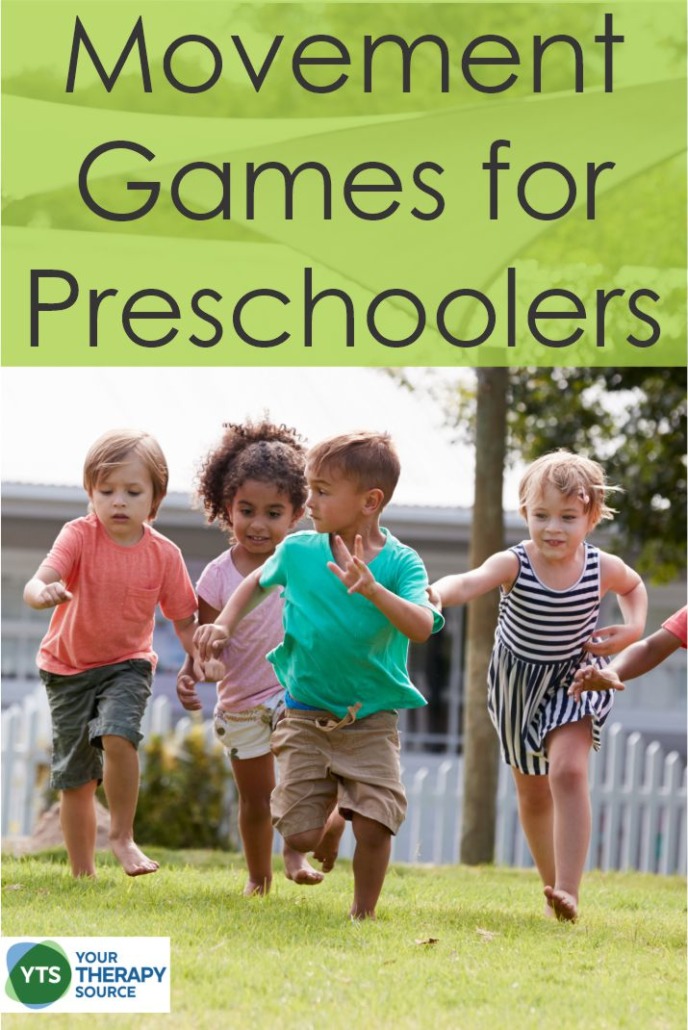
Movement games are a great way to get preschoolers moving and having fun. They can be used in the classroom or at home and they are a great way to help young children learn about their bodies and how they move. There are all sorts of different movement games for preschoolers that you can try, so choose your favorites or mix and match them to create your own unique game!
WHAT ARE MOVEMENT GAMES FOR PRESCHOOLERS?
Movement games are a great way for preschoolers to get the exercise they need. Not only do they help to improve coordination and gross motor skills, but they also provide an opportunity for social interaction. Examples of popular movement games for preschoolers include “Simon Says,” “Red Light, Green Light,” and “Musical Chairs.”
In “Simon Says,” children follow the leader’s instructions, which often involve movement.
Red Light, Green Light is a classic game in which children must freeze when the leader says “red light” and move when the leader says “green light.”
“Musical Chairs” is a game in which children walk around chairs while music is playing; when the music stops, they must sit in a chair.
Movement games are a great way for preschoolers to get the exercise they need. Not only do they help to improve hand-eye coordination and gross motor skills, but they also provide an opportunity for social interaction.
THE GENERAL BENEFITS OF MOVEMENT GAMES FOR PRESCHOOLERS
Movement games are an important part of a preschooler’s day. The general benefits of movement games for preschoolers include:
- help to develop gross motor skills.
- a fun way to burn off energy and we all know preschoolers have a LOT of energy.
- muscle strengthening – those little legs, arms, and core muscles get a great workout on playground equipment, outdoor play and even indoor movement breaks.
- coordination skills
- motor planning skills
- improving cognitive development since they require children to follow directions and think creatively.
- building social skills – provides an opportunity for children to interact with their peers.
Movement games are a great way for preschoolers to stay active and engaged, and they offer many benefits for child development.
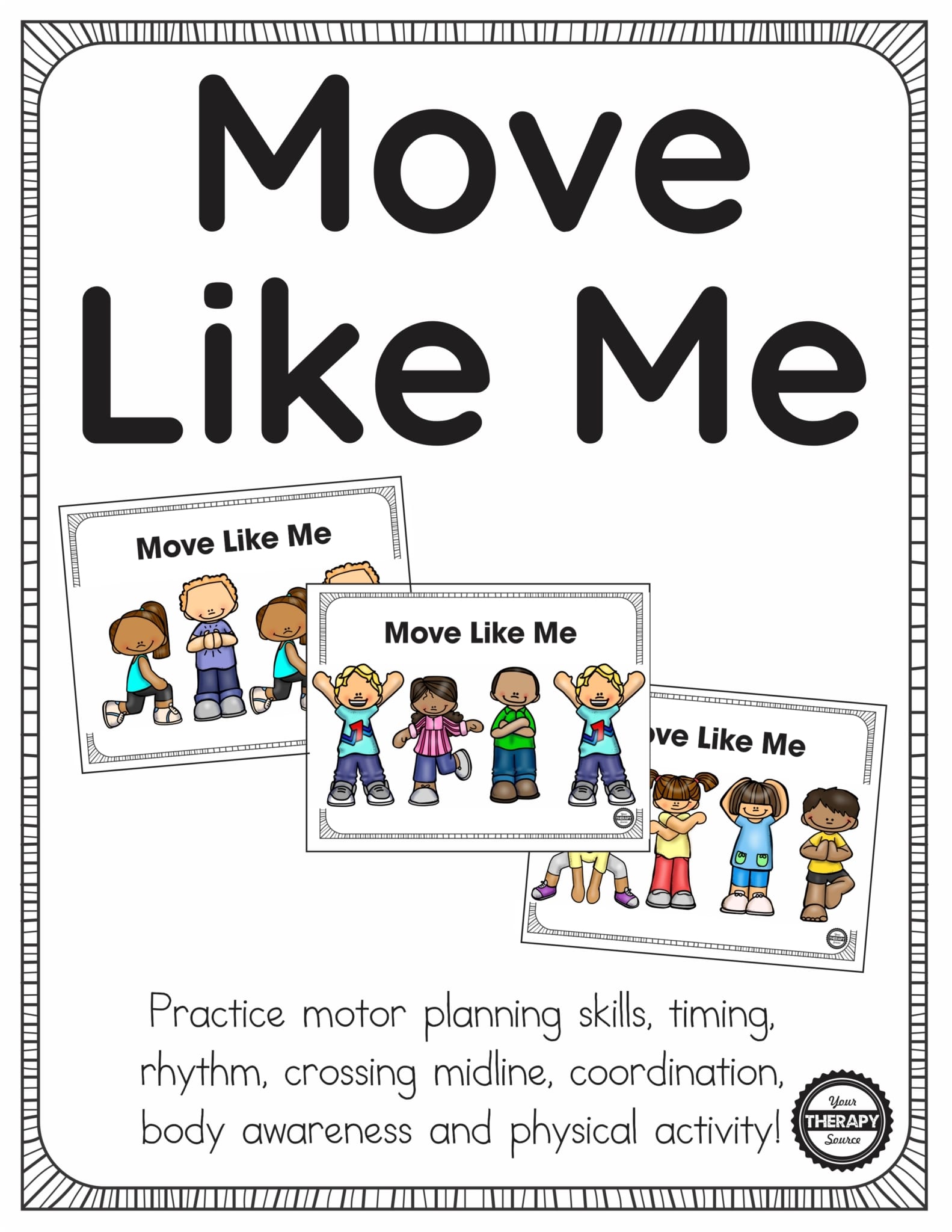
Move Like Me – Motor Planning, Coordination and Body Awareness
SPECIFIC SKILLS THAT PRESCHOOLERS WORK ON DURING MOVEMENT GAMES
If preschoolers are going to make the most out of their movement games, you want to know that there are specific skills that are targeted when they play these games. Here are some of the skills that preschoolers work on during movement games:
- Gross motor skills: These skills can include crawling, walking, running, jumping, leaping, hopping, galloping, and skipping.
- Eye Hand Coordination skills: catching and throwing a ball, kicking a ball, etc. These types of skills also help children with early rewriting skills (drawing lines and shapes), writing letters, and even reading and math (visual scanning and visual spatial skills).
- Bilateral Coordination skills: This is the ability to move your arms with your legs or the left side of the body with the right side of the body. These types of skills are the building blocks for more organized sports.
- Cognitive development: Movement games help to improve cognitive development. Children have to follow multiple steps directions to follow the rules. In “Simon Says,” for example, children must follow the leader’s instructions and think quickly.
- Self Regulation Skills: The ability to have self-control is critical in young children. In “Red Light, Green Light,” children must freeze when the leader says “red light” and move when the leader says “green light.” This game requires children to think strategically in order to win.
- Social skills: Movement games provide an opportunity for children to interact with their peers, take turns, and oftentimes win or lose. There are different types of games to play such as cooperative or competitive.
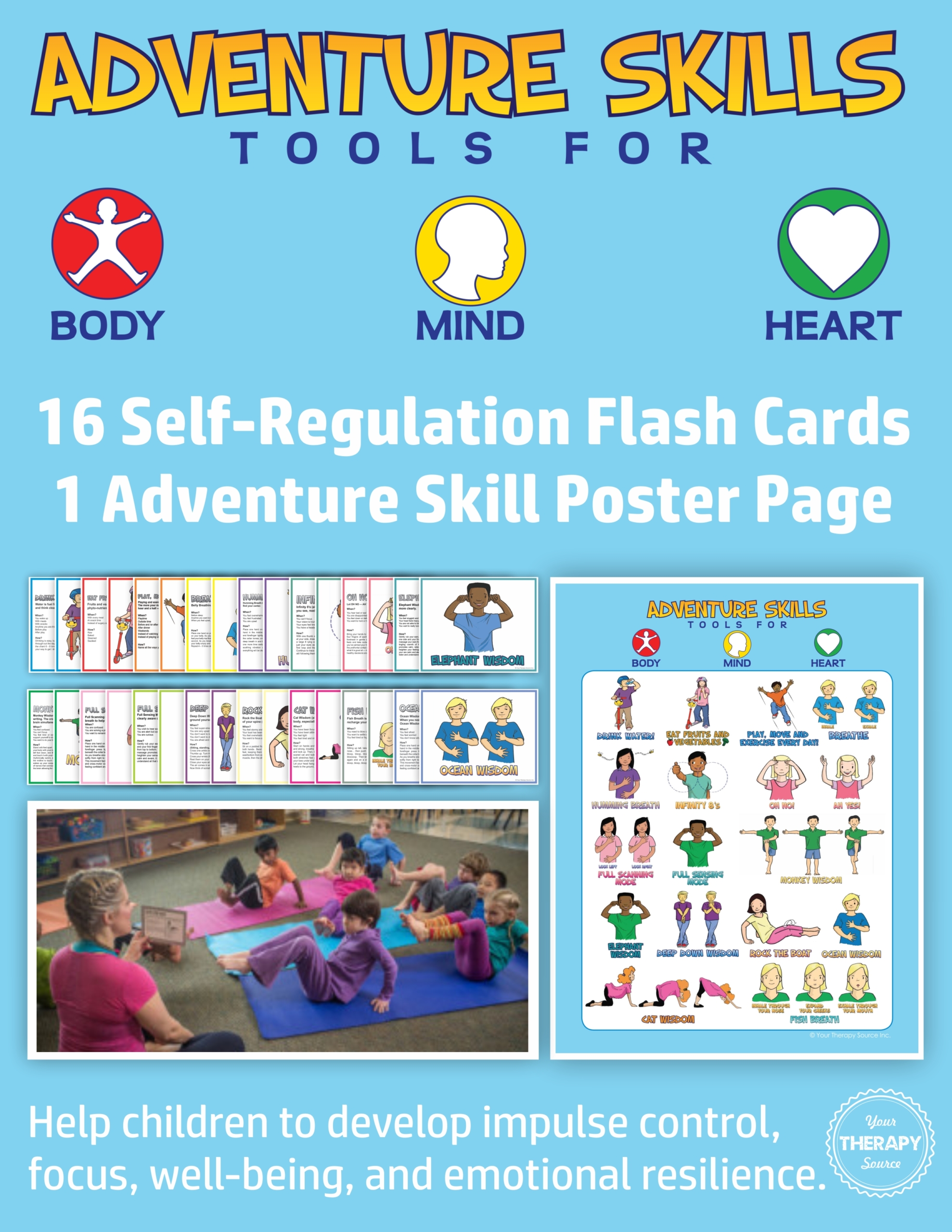
Self-Regulation Flash Cards – Updated
HOW TO PLAY MOVEMENT GAMES WITH PRESCHOOLERS
There are many movement games that you can play with preschoolers. As long as they are engaged, moving, and having fun, your movement games will be successful for your little ones. You can also get creative and come up with your own movement games. Some of the classics include:
- limbo: children walk under a pole or stick as it is lowered closer to the ground
- freeze tag: one child is “it” and must freeze when touched; other children can move around freely, but must freeze when “it” touches them
- hopscotch: draw a hopscotch board on the ground and have children hop from one square to the next
- scavenger hunt: hide objects around the house or yard and have children search for them
- duck, duck, goose: children sit in a circle, and the child who is “it” moves around the circle tapping each child’s head saying “duck”; but when the child who is”it” says “goose” they chase each other around the circle back to the empty spot. This is a timeless game that children love!
- playing animals: children imitate the movements and sounds of animals such as stomping like an elephant, jumping and croaking for a frog, slithering like a snake, or waddling like a penguin.
Even if your preschoolers can’t complete every part of the game, they will be moving, socializing, and enjoying themselves!
OUTDOOR MOVEMENT ACTIVITIES FOR PRESCHOOLERS
There are many movement games that can be played outdoors. Preschoolers love to play outside, so make that experience even more fun by playing some movement games. Here are a few ideas:
- Classic Tag or Chase: one child is “it” and must run away from the other children, who try to catch them
- Freeze tag: one person or a few people are it. If you get tagged you have to freeze until someone comes and untags you.
- Four square: draw a large square on the ground and have children play by bouncing a ball in and out of the square
- Catch: have children stand in a large circle and toss a ball to each other. Beach balls are great for this!
- Hula hoop: bring out hula hoops and watch students work on their rhythm as they try to keep the hula hoop off the ground
- Relay races: put painter’s tape at the finish line and see who can reach it the fastest
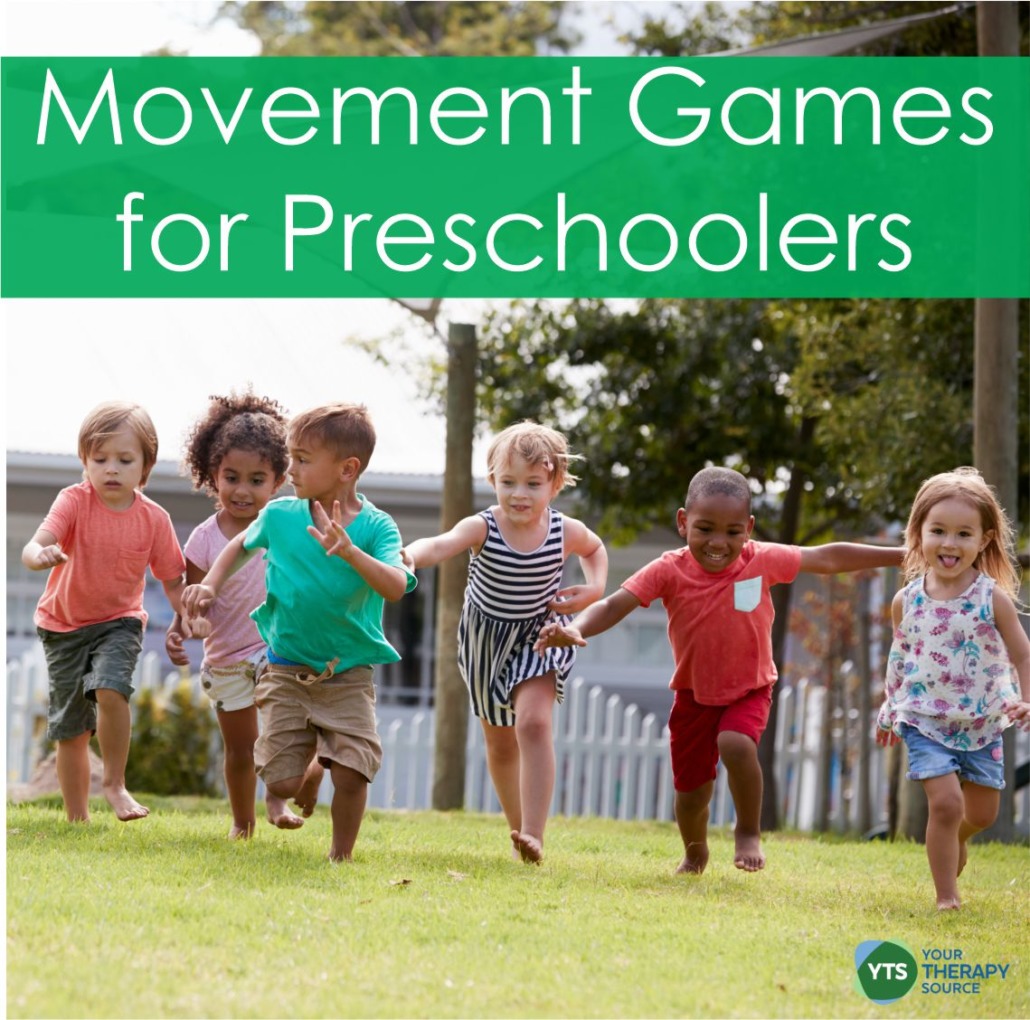
INDOOR MOVEMENT ACTIVITIES FOR PRESCHOOLERS
Sometimes the space you are working with is limited to an indoor space, or the weather makes inside games your only option. There are many movement games that can be played indoors. Here are a few ideas:
- Keep it super simple – practice different ways to move across the room: hop on one foot, crawl, jump, spin, etc. from one end of the room to the other
- Follow the leader: have one child be the leader and have the other children follow his or her instructions
- Balloon toss: blow up balloons and toss them to each other or play keep it up. Make a balloon paddle with movement activity ideas.
- Bean bag toss: stand at opposite ends of a room and toss beanbags to each other
- Dancing: choose songs with instructions like “Head, Shoulders, Knees and Toes,” “One Little Finger,” or “Hokey Pokey” for maximum movement
- Freeze dance: dance to a song until it is turned off, at which point children freeze; unfreeze when the music comes back on
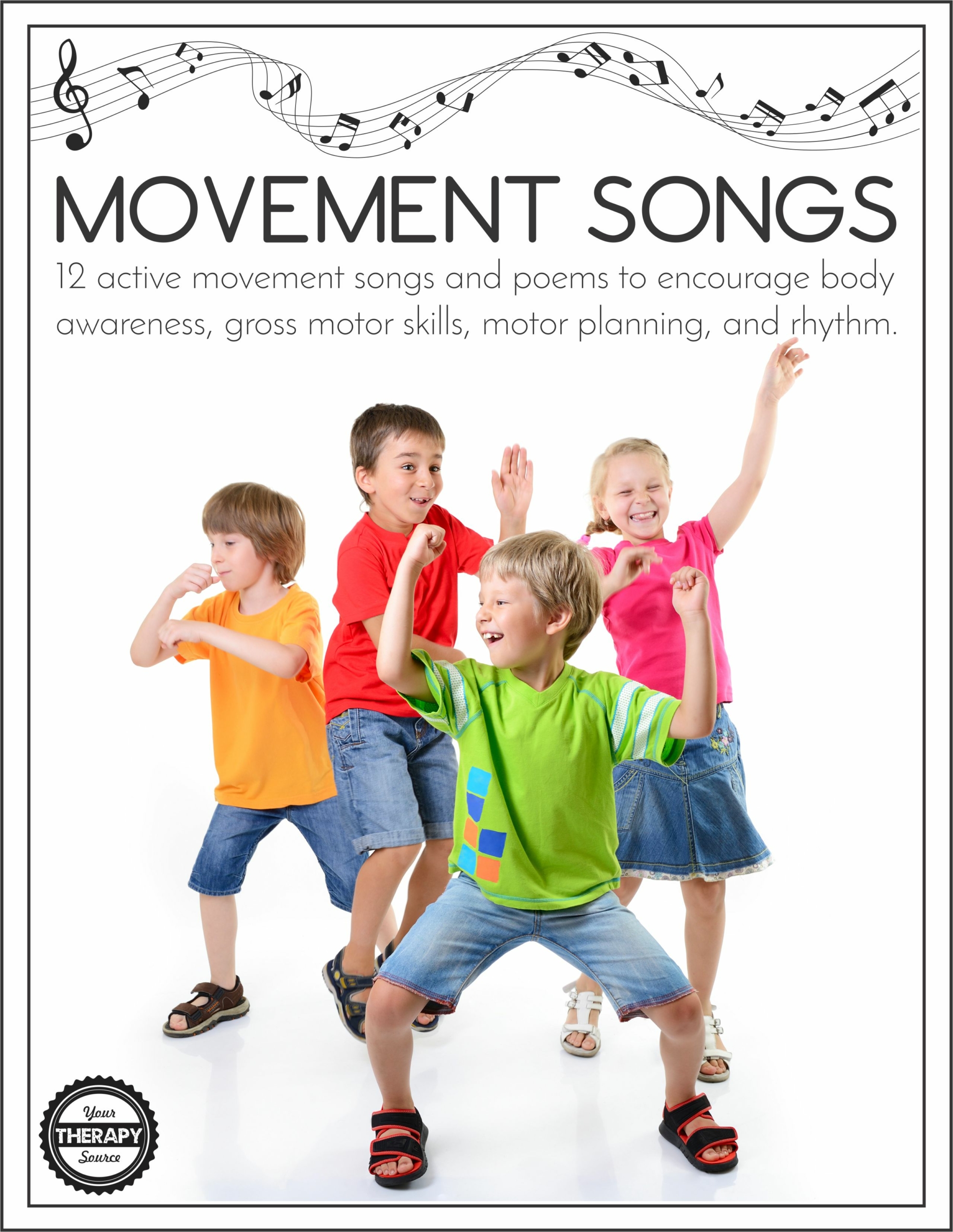
Movement Songs
VARIATIONS ON POPULAR MOVEMENT GAMES FOR PRESCHOOLERS
There are many variations on popular movement games that can be played with preschoolers. Here are a few ideas to complement the classic games:
- “Simon Says” : instead of following the leader’s instructions exactly, children can improvise and create their own movements. Check out all of these Simon Says ideas here.
- – “Red Light, Green Light”: children can race to a finish line or do a certain movement when they hear “green light” and freeze when they hear “red light”
- Musical Chairs: instead of sitting down when they hear the music stop, children can freeze in whatever position they are in or do a certain movement. Try placing yoga pose cards on a table. Turn on the music and walk around the table. When the music stops, the children have to perform the yoga pose on the card that they are closest to.
- Hide and Seek Sardines Style: only one child hides and everyone else looks; as they find the hider, they all hide with them
- Wacky Races: children have to crawl, dance, or pretend to swim to the finish line
ADDITIONAL MOVEMENT ACTIVITIES FOR PRESCHOOLERS
Need even more ideas? Check out this blog post for self regulation games that do not require any equipment. Or try some of these additional suggestions:
- create an obstacle course: set up cones, chairs, or other objects in a room or yard and have children navigate through them as quickly as possible
- host a dance party: put on some music and have children dance however they want
- bike or trike: get tricycles or bicycles and have children ride down the sidewalk
- balance games: use a balance beam or just make a line on the ground using chalk for children to walk along. Try these 10 different ways to walk across a balance beam.
Movement games for preschoolers can provide a variety of benefits, such as developing gross and fine motor skills, improving balance and coordination, and increasing physical activity. We’ve shared some great ideas for indoor and outdoor movement games that are perfect for young children. If you’re looking for even more inspiration, be sure to check out our Movement Games for Kids Free PDF.
RELATED POSTS
Music and Movement:
These music and movement activities can help young learners develop important skills. They will have a lot of fun dancing, singing, and playing instruments. These activities help with gross motor skills, locomotor skills, coordination, and teamwork. Read more about Music and Movement Activities for Preschoolers.
Large Group Activities for Preschoolers
These literacy, math, and movement ideas are great for the entire preschool class! Read more about Large Group Activities for Preschoolers.
Circle Activities for Preschoolers
Read ideas that include fine motor, gross motor, social skills, and literacy skills during circle time. Read these circle activities for preschoolers.
Parachute Activities for Preschoolers
Read more on the benefits of this super fun activity! Check out Parachute Activities for Preschoolers.
Movement Breaks and Time on Task for Preschoolers


